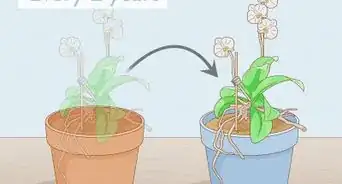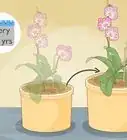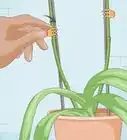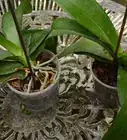This article was co-authored by Andi Xoch. Andi Xoch is a Plant Specialist and the Owner of Latinx with Plants, a plant shop and resource based in Los Angeles, California. With over a decade of experience in the plant and garden industry, she specializes in plant maintenance, growth, and education. Andi has grown her business from a pop-up shop at home to two brick-and-mortar plant shops. She aims to share how to use plants as a healing tool.
There are 11 references cited in this article, which can be found at the bottom of the page.
wikiHow marks an article as reader-approved once it receives enough positive feedback. In this case, 96% of readers who voted found the article helpful, earning it our reader-approved status.
This article has been viewed 414,887 times.
Orchids produce beautiful blooms, but they require pruning once the flowers fall off. You can easily trim dead stems and roots on your orchid to improve its overall health. You can also prune an orchid to promote flowering. Take good care of your orchid, and it may continue to grow and bloom for many years to come.
Steps
Trimming off Dead Stems and Roots
-
1Sterilize your pruning shears before you trim your orchid. Dip your pruning shears in a cup of rubbing alcohol and let them soak in it for 30 seconds. Open and close the shears a few times to ensure that the alcohol gets all over the blades. Then, remove the shears from the alcohol and set them on a paper towel to dry.[1]
- Rubbing alcohol dries quickly, so it will only take a few minutes for them to dry.
-
2Wait for all of the flowers to fall off of a stem before pruning it. If your orchid is still blooming or if there are healthy flowers still on the stems, don’t prune the orchid yet. Wait until the blooms fall off.[2]
Did you know? The lifespan of the blooms on your orchid depends on the type of orchid you have. For example, Cattleya blooms may only last 1 to 4 weeks, while Phalaenopsis blooms can last from 1 to 4 months!
Advertisement -
3Cut the stem down to the level of the soil if it is brown.[3] If your orchid has any stems that are brown or yellow and shriveled, they will not produce any more flowers, so pruning the stems is not recommended. Instead, cut these stems off completely. Use your sterilized pruning shears to cut the stems all the way down to the orchid’s roots.[4]
- Cutting off the stems might seem drastic, but it will allow new, healthy stems to grow.
-
4Trim off any brown, soft roots that are protruding from the soil. Pull your orchid up and out of its pot and look at the roots to see if any of them appear to be dead. Dead roots will look brown and feel soft to the touch. Live roots will be white and firm. Cut across any of the roots that appear to be dead and then return the plant to its pot or repot it.[5]
- Trimming off dead roots will help to prevent root rot, which can kill your orchid.
Pruning to Encourage Flowering
-
1Sterilize your pruning shears before pruning your orchid. Dip your pruning shears in a cup filled with isopropyl alcohol or rubbing alcohol for 30 seconds. Open and close them a few times to ensure that the alcohol makes contact with all surfaces of the blades. Then, place the pruning shears on a paper towel to air dry completely.[6]
- Rubbing alcohol dries quickly, so the shears should be ready to use within a few minutes.
Warning: Don’t skip sterilizing your shears as orchids are susceptible to diseases from dirty shears. Sterilizing the shears will help to keep your orchid healthy.
-
2Inspect the leaves of your orchid to ensure it’s healthy enough to prune. If the base of the plant has glossy, green, firm leaves, then it is healthy enough for pruning. However, if the leaves are yellow, brown, dry, or limp, then the plant is not healthy enough for pruning. Give the plant a chance to get healthy before you prune it.[7]
- Make sure that you wait until all of the flowers have shriveled or fallen off before trimming to encourage new flowers to grow.
-
3Check to see if your orchid has any dormant eyes on the stems. Eyes on orchid stems look like small spikes covered with a thin layer of brown or beige plant matter. These eyes can become new stems or flower spikes later on. If you notice any eyes on your orchid, be sure to prune the plant 1⁄2 in (1.3 cm) above them.[8]
- The eyes on orchids look similar to eyes you might spot on a potato.
-
4Identify the second node below where the flowers bloomed. A node looks like a brown line running horizontally in a circle around the stem. Usually, the nodes are thicker than other areas of the stem. Nodes are where new flower spikes will emerge on the orchid when it’s ready to bloom again.[9]
- If you spot an eye on a node, cut just above the node where the eye is located to preserve it.
-
5Cut 1⁄2 in (1.3 cm) above the nodes to encourage flowering. This is about the width of your pinky finger. Cut straight across the stem with the sterilized shears. Cutting too close to the node or too far away may affect the plant’s ability to flower.[10]
- If there is an eye on the node, be careful not to cut the eye. Leave any brown or beige papery ski that’s covering the eye intact as well.
-
6Watch for new flowers to develop in 8-12 weeks. The speed at which your orchid will flower again will depend on its overall health, climate, and care. However, in general you can expect new flowers to bloom about 8 to 12 weeks after you prune your orchid.[11]
- If no flowers bloom within 8 to 12 weeks, try lowering the ambient temperature where your orchid is located by 5°C (8°F). This may help to stimulate new growth.[12]
Caring for the Orchid after Pruning
-
1Repot the orchid after pruning if it has outgrown its pot. Repotting your orchid once every 2 years or whenever the roots are the same size as the pot is ideal. Choose a pot that is 2 sizes larger than the pot your orchid is currently in, such as a 8 in (20 cm) diameter pot if your orchid is currently in a 6 in (15 cm) pot. Add new potting soil and carefully transfer your orchid to the new pot.[13]
- Make sure that you use a specially formulated, well-draining orchid potting soil to repot your orchid.
-
2Keep the orchid in an east or west-facing window. This type of location will help to ensure that your orchid gets plenty of sunlight. Monitor the orchid closely to ensure that it is not getting too much sunlight, which may cause the leaves to turn brown or yellow. If the plant is getting too much sunlight, try a different location.[14]
Did you know? If the leaves on an orchid are dark green, it’s probably not getting enough light and the plant may not bloom. If the orchid’s leaves are a light green color, it is getting adequate light for flowering.[15]
-
3Water the orchid only when the soil feels dry. Orchids can rot and die if you water them too often, so always check the soil before you water it. Stick your finger into the soil to see if it feels moist. If it does, then you don’t need to water the orchid. If the soil feels dry, water your orchid.[16]
- You can also use a pencil or wooden skewer to check the moisture level of the soil. Stick the pencil or skewer into the soil by about 1 in (2.5 cm), then pull it out and look at it. If the wood is dark from moisture, don’t water the orchid. If the wood is dry, water the orchid.
-
4Fertilize the orchid 3 out of 4 times when you water it. Purchase an orchid fertilizer and add it to your watering can as indicated by the manufacturer’s instructions. Use the fertilizer infused water for 3 waterings, and then use plain water for the fourth watering to wash out any built-up salts in the soil. Then, repeat the cycle with 3 fertilizer-infused waterings followed by 1 plain water one.[17]
Expert Q&A
-
QuestionHow do you care for orchids?
 Monique CapanelliMonique Capanelli is a Plant Specialist and the Owner and Designer for Articulture Designs, an innovative design firm and boutique in Austin, Texas. With over 15 years of experience, Monique specializes in interior botanical design, living walls, event decor, and sustainable landscape design. She attended the University of Texas at Austin. Monique is a Certified Permaculture Designer. She provides plant and botanical design experiences, from small gifts to entire transformations, to shoppers as well as commercial clients including Whole Foods Market and The Four Seasons.
Monique CapanelliMonique Capanelli is a Plant Specialist and the Owner and Designer for Articulture Designs, an innovative design firm and boutique in Austin, Texas. With over 15 years of experience, Monique specializes in interior botanical design, living walls, event decor, and sustainable landscape design. She attended the University of Texas at Austin. Monique is a Certified Permaculture Designer. She provides plant and botanical design experiences, from small gifts to entire transformations, to shoppers as well as commercial clients including Whole Foods Market and The Four Seasons.
Plant Specialist
-
QuestionMy orchids have feeler roots. Can I safely cut them off?
 NinoxTop AnswererNo, orchids grow feeler roots when they need more humidity. If you cut them, the plant is in danger of dying.
NinoxTop AnswererNo, orchids grow feeler roots when they need more humidity. If you cut them, the plant is in danger of dying. -
QuestionWhen should orchids be pruned?
 Drew Hawkins1Community AnswerYou should wait until all of the flowers fall off of a stem before you prune it. Pruning it while it's still blooming or there are healthy flowers on the stem can damage it. If a stem is brown, cut it down to the level of the soil.
Drew Hawkins1Community AnswerYou should wait until all of the flowers fall off of a stem before you prune it. Pruning it while it's still blooming or there are healthy flowers on the stem can damage it. If a stem is brown, cut it down to the level of the soil.
Things You’ll Need
- Pruning shears or a razor blade
- Rubbing alcohol
- Paper towel
- Orchid potting medium
- New pot
References
- ↑ http://www.aos.org/orchids/orchid-care/where-do-i-cut-the-spike.aspx
- ↑ https://www.rhs.org.uk/advice/profile?pid=388
- ↑ Andi Xoch. Plant Specialist. Expert Interview. 4 August 2021.
- ↑ https://www.youtube.com/watch?v=mHDoyH0tRYc&feature=youtu.be&t=343
- ↑ http://www.aos.org/AOS/media/Content-Images/PDFs/Reveries-of-Repotting.pdf
- ↑ http://www.aos.org/orchids/orchid-care/where-do-i-cut-the-spike.aspx
- ↑ https://www.youtube.com/watch?v=mHDoyH0tRYc&feature=youtu.be&t=317
- ↑ https://www.youtube.com/watch?v=mHDoyH0tRYc&feature=youtu.be&t=198
- ↑ https://www.rhs.org.uk/advice/profile?pid=388
- ↑ https://www.youtube.com/watch?v=mHDoyH0tRYc&feature=youtu.be&t=251
- ↑ http://www.aos.org/orchids/orchid-care/where-do-i-cut-the-spike.aspx
- ↑ https://www.rhs.org.uk/advice/profile?pid=388
- ↑ https://www.youtube.com/watch?v=mHDoyH0tRYc&feature=youtu.be&t=367
- ↑ https://www.rhs.org.uk/advice/profile?pid=388
- ↑ http://www.aos.org/orchids/additional-resources/light-the-key-to-successful-blooming.aspx
- ↑ http://www.aos.org/orchids/orchid-care/how-do-i-water-my-orchid.aspx
- ↑ https://www.rhs.org.uk/advice/profile?pid=388
About This Article
To prune an orchid, wait until it goes into its rest state in the late fall, so that you don’t do permanent damage when you trim it. Then, use sharp scissors to trim off any black or damaged parts of the leaves so that the disease doesn’t spread. If a whole leaf is yellow or withered, try gently pulling on it to remove it. After trimming the leaves, remove the orchid from its pot to look for any brown or shriveled roots and cut them away with scissors before repotting the plant. For tips on how to prune the flowering stem on different types of orchids, read on!
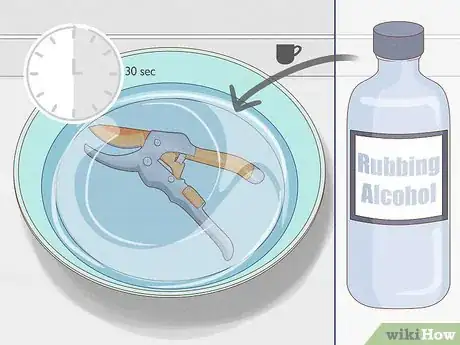
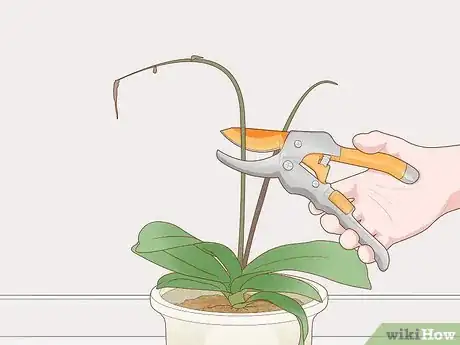
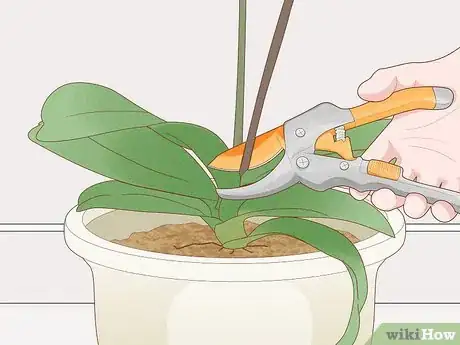

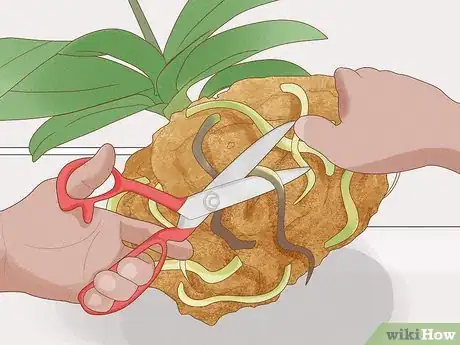
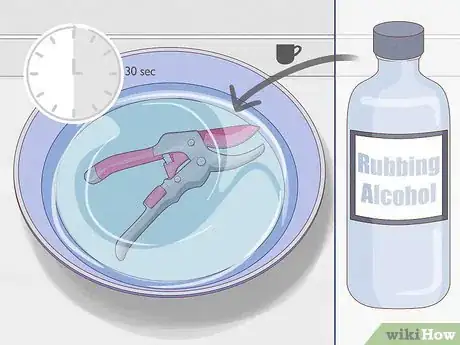
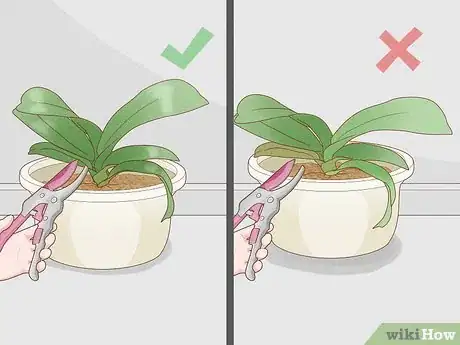
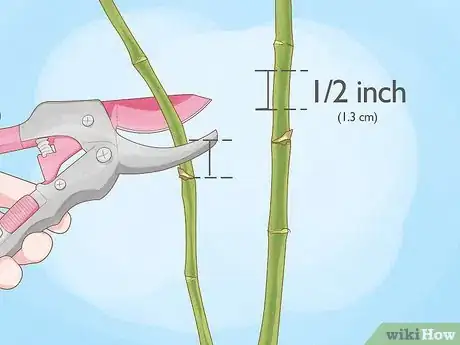
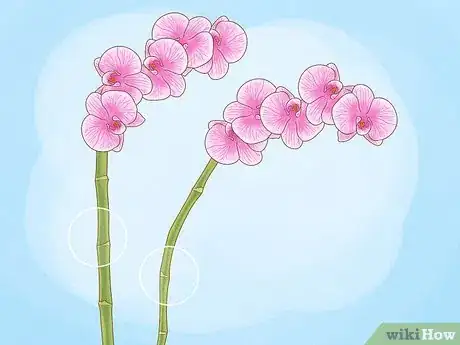
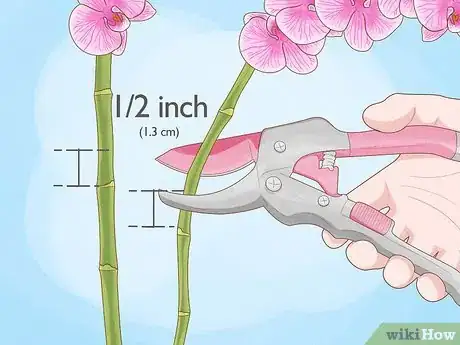
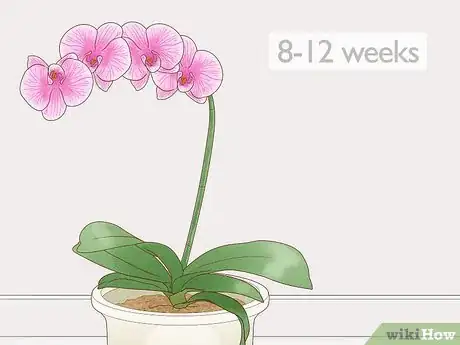
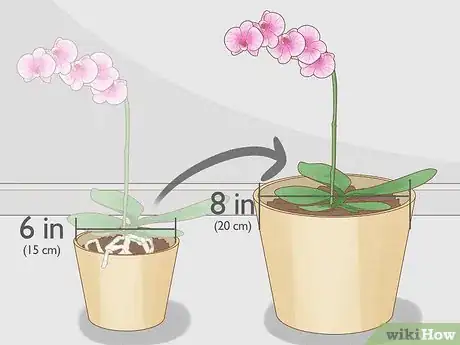
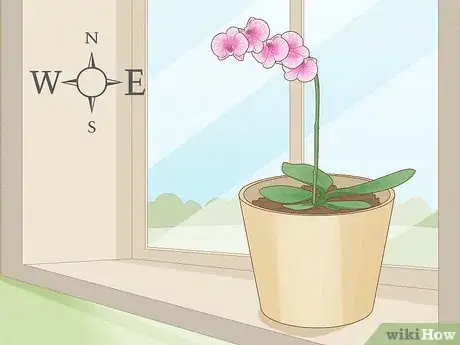
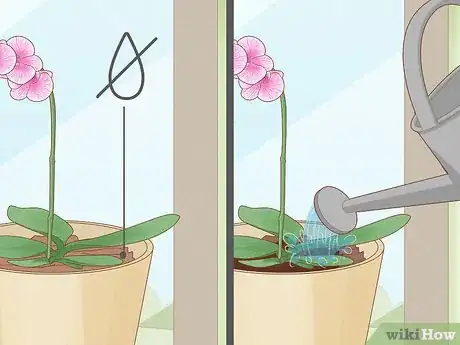
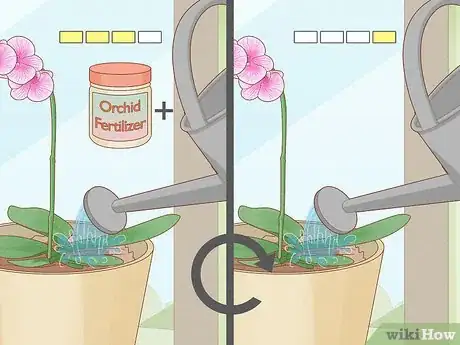
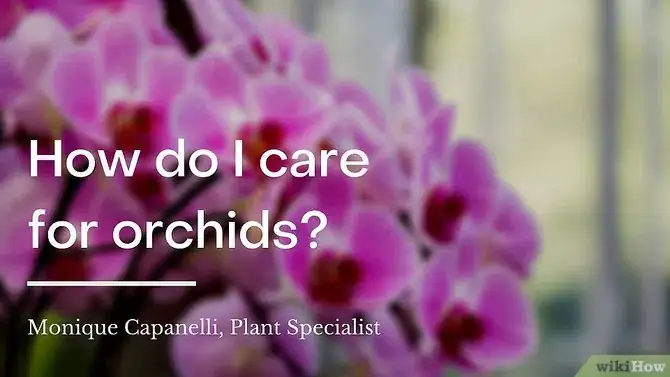


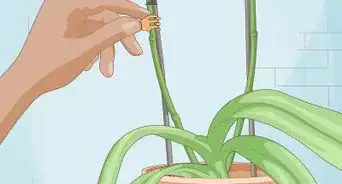
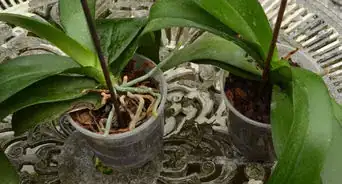
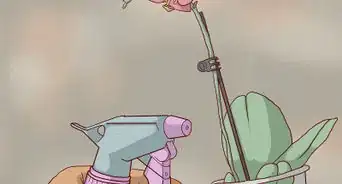
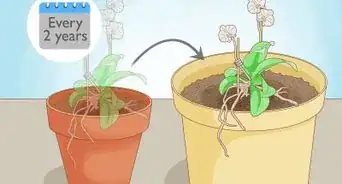


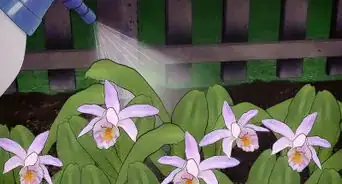
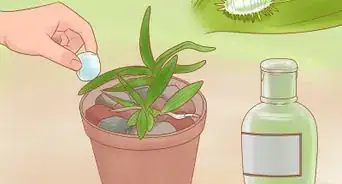
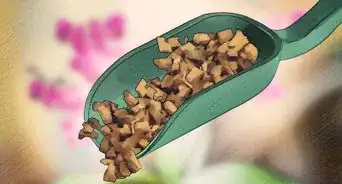
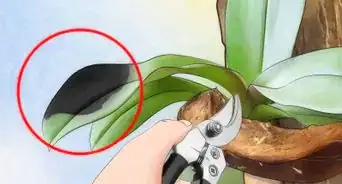
-Step-8.webp)
